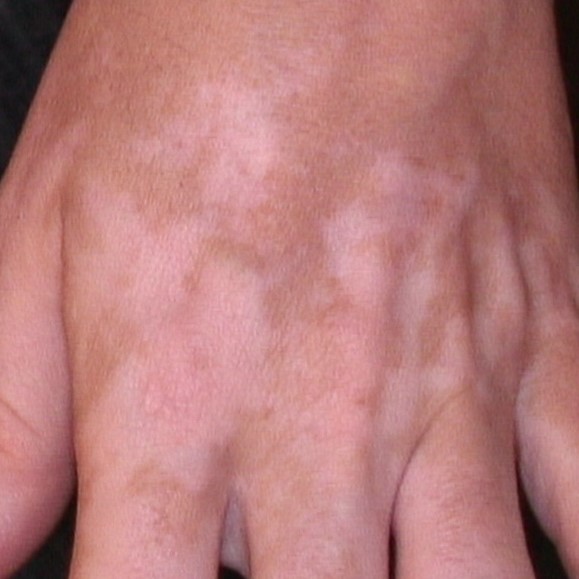Combination of carboxytherapy with narrowband-ultraviolet B in the treatment of recalcitrant areas of vitiligo: A randomized clinical trial

Combination of carboxytherapy with NB-UVB leads to higher percentage of repigmentation and patients' satisfaction compared to monotherapy with NB-UVB.
Carboxytherapy has been used in the treatment of autoimmune skin diseases such as psoriasis and morphea. Carboxytherapy has antioxidant effects, and leads to better tissue oxygenation, and release of growth factors. In this article, we decided to evaluate efficacy of combined carboxytherapy and narrowband-ultraviolet B (NB-UVB) compared to NB-UVB alone in the treatment of vitiligo. This is a prospective, split-body double-blind comparative study performed in patients with generalized stable vitiligo in acral areas and extremities referred to dermatology clinic of Afzalipour hospital in Kerman University of Medical Sciences. NB-UVB was performed three times a week in non-consecutive days for 4 months. In each patient, one lesion was randomly treated with carboxytherapy (weekly sessions for total of 16 sessions). Efficacy of treatment was evaluated by percentage of repigmentation of the lesions. Chi-square test and analysis of variance test (ANOVA) were used to compare efficacy of treatment based on demographic features of the patients and clinical features of the lesions, respectively. Twenty-eight patients with mean age of 32.35 ± 7.37 years old completed the study. At the end of the treatment, 37% of the patients in combination therapy group demonstrated more than 75% improvement compared to 0% in the monotherapy group (p = 0.001). There was no significant difference between either demographic features of the patients (age, sex, and skin phototypes) or duration of disease with efficacy of the treatment in both groups. Combination of carboxytherapy with NB-UVB leads to higher percentage of repigmentation and patients' satisfaction compared to monotherapy with NB-UVB.
https://pubmed.ncbi.nlm.nih.gov/34820974/

 Français
Français Italiano
Italiano Deutsch
Deutsch Nederlands
Nederlands



